MLB Awards Watch: Top 5 AL ROY candidates through June

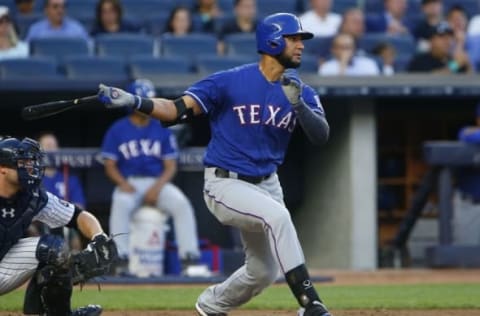
Rookies are always some of the more exciting players to watch in baseball. In our next MLB awards watch piece, we take a look at the five American League rookies that have provided the most for their teams through June.
Each month, we like to take some time to outline some of the favorites for the various award races around MLB. Of course, these things are bound to change as the season continues, but it can be interesting to assess what we have seen so far. Here, we are going to focus on the American League Rookie of the Year race as it stands right now.
We are now a little over half way through the 2016 season, so while that leaves quite a bit more time for the race to change, it’s also far enough along that some of the flash-in-the-pan contenders have fizzled out.
Houston Astros 1B/DH Tyler White appeared on both the April and May editions of our MLB Awards Watch for AL Rookies, but really hit a rough patch, bringing his season line down to .211/.296/.386 before getting sent down to Triple-A.
The same goes for Byung-ho Park, who dropped all the way down to .191/.275/.409 and was also demoted to Triple-A by the Twins.
At the same time, there are a couple of names who have stuck around this month, and that’s how we begin to see who the real contenders are. All that said, here are our top 5 American League rookies through June.
Honorable mentions: Kansas City Royals utility man Whit Merrifield; Houston Astros pitcher Chris Devenski
Next: Number 5
5. Hyun Soo Kim – BAL
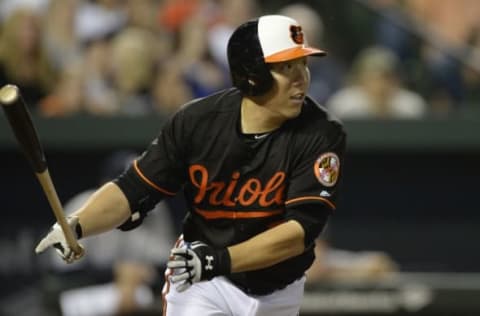
.338/.423/.477, 3 HR, 11 RBI , 145 wRC+, 0.9 WAR
Looking at Orioles outfielder Hyun Soo Kim‘s batting line, it feels crazy to put him 5th on the list. Yeah, the home runs and RBI might not look great, but his .423 OBP leads American League rookies by almost 50 points, and ranks 5th in all of baseball. His overall offensive production, measured by wRC+, ranks 2nd among rookies and 16th in all of baseball.
The problem is, however, that he hasn’t played all that much. He has just 149 plate appearances in 40 games, and that has to be considered. I don’t find it fair to essentially penalize others who have had more time to struggle and slump. It’s doubtful that Kim maintains this production all year.
Beyond that, speaking in regard to what voters might believe, the fact that he comes from another professional league could be a point of contention. He is 28, and enjoyed nine years of success in the Korean Baseball Organization before coming here. He is still technically a rookie, but there are some who view him differently than other rookies who came up through the minor leagues.
It will be interesting to see how Kim performs going forward. I would be surprised if he maintained anything near this kind of production, but if his time in Korea is any indication, he has the ability to get on base at a high clip (.406 in his KBO career), and add a bit of power as well (averaged ~25 doubles and 15 home runs per year in the KBO). There’s also the chance that playing more consistently will expose him and cause his production to falter.
Next: Number 4
4. Dae-Ho Lee – SEA
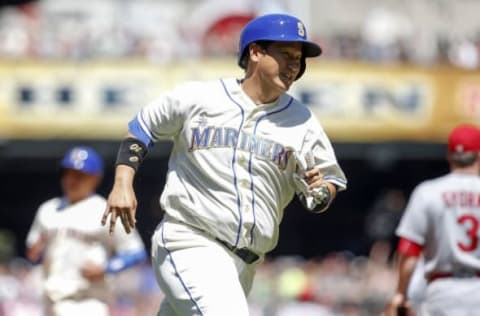
.294/.339/.515, 11 HR, 36 RBI, 130 wRC+, 1.1 WAR
The number four spot on my list is also occupied by an international player whose age and past professional experience could be a sticking point for some. Seattle Mariners first baseman Dae-ho Lee is 33 years old but is in his first major league season after spending 10 seasons in the KBO followed by four in Japan’s NPB.
Lee joined the Mariners late in the offseason and had to compete for a roster spot in spring training, and even then has mostly been just the short-side of a first base platoon with Adam Lind. So, like Kim, he hasn’t been a full-time player and has spent a lot of time playing only in favorable match-ups, so as good as Lee has been, and as much as I’d like for him to be higher, it doesn’t seem fair to me.
All that said, Seattle couldn’t have asked for any more from Lee. His 130 wRC+ is 3rd among AL rookies, and his defense appears better than one might expect from someone his size (6’4″ with a listed weight of anywhere from 250 to 286), judging from defensive metrics (+2.6 UZR), the eye test and comments from the team.
Lee has gotten a chance to play more regularly with Nori Aoki having been sent down to Triple-A, and if that continues we will get a chance to see how he holds up. It really appears that he is simply a good hitter, having massive power but also wielding the ability to spray the ball around when needed. But, as I mentioned, I think we need to see it for a longer period before placing him above the names that are to come.
Next: Number 3
3. Tyler Naquin – CLE
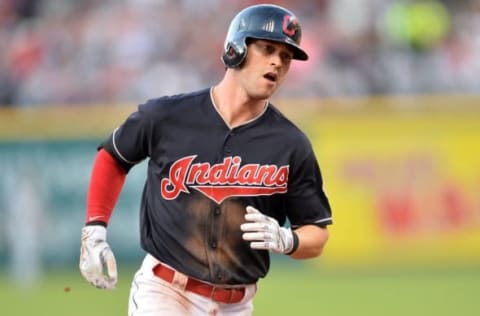
.311/.377/.564, 6 HR, 17 RBI,150 wRC+,1.2 WAR
Cleveland Indians outfielder Tyler Naquin is a guy who, based on his batting line alone, would seem to deserve the top spot, and at first, I seriously considered giving it to him. His 150 wRC+ leads all rookies, and his WAR is tied for 2nd among them. But, like the previous two names, he hasn’t had all that much playing time overall.
He’s come to the plate just 156 times, fewer than Dae-Ho Lee and ever so slightly more than Hyun Soo Kim. But more important than that is the fact that 135 of those PAs have come against right handed pitchers, leaving just 21 against southpaws. That’s an extremely strict platoon, and is a strong indicator that the Indians don’t expect a ton of production from Naquin against lefties.
For comparison, Lee, also in a platoon for the most part, has faced an equal number of righties and lefties. Some of that is because there are more right handed pitchers, and it’s not as easy to hide someone from them; but he has also been allowed to start against righties, particularly lately, and even in the past wasn’t automatically pinch-hit for against them. His role in the platoon was defined more by Adam Lind’s deficiencies than his own.
That said, we can’t ignore the production, and the fact that roughly 70 percent of pitchers are right-handed means Naquin can still get plenty of playing time even in a strict platoon. He has been the best rookie hitter, and though the defensive metrics don’t love his defense, being able to play center field is pretty valuable, certainly more so than being a 1B/DH type.
Naquin could easily fall back down to earth, but for now, I think he has earned his spot here.
Next: Number 2
2. Nomar Mazara – TEX
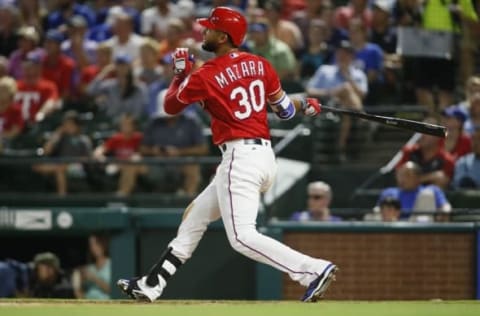
.286/.334/.429, 11 HR, 35 RBI, 97 wRC+, 1.4 WAR
If you have been following these posts every month, you know that this means we will have a new leader in this edition, as Rangers outfielder Nomar Mazara had previously occupied that spot for both April and May.
Looking at Mazara’s traditional numbers — slash line, homers and RBI — he appears to be having a pretty great year. The problem is that he has the benefit of playing half his games in Texas, one of the more hitter-friendly parks in the game. For that reason, his wRC+ — which takes into account park effects, and adjusts so that 100 is league average — is lower than all three of Kim, Lee and Naquin, and is a touch below league average.
What Mazara has that the others don’t, though, is consistent playing time. He has been a full-time player for all but the first week or so of the season, playing three games in Triple-A before being called up to be the Rangers’ regular right fielder. So even if his offensive numbers are lesser, that could be because he has had more time to slump, and for the league to adjust to him. He’s also not being platooned, so he’s facing more unfavorable match-ups than the others.
Kim, Lee and Naquin have an average of about 160 plate appearances. Through 162 plate appearances, from his debut on April 10th through May 24th, Mazara was slashing .317/.364/.483 with a 120 wRC+. He was up to a 126 wRC+ less than a month ago. And again, that is without any coddling and favorable platooning. It doesn’t feel right to penalize Mazara for being an everyday player, with this month-long slump dragging down his overall numbers.
Beyond that, Mazara appears to be a top notch defender in right field, both from reputation/eyes and the metrics, which have him as a +9.1 UZR already in 647.1 outfield innings. Even when he isn’t hitting quite as much as one would like, he can still provide value.
Now, this isn’t to say Mazara gets this benefit of the doubt forever. If his production stays where it is, and the others behind him continue to produce at a higher level, they can easily overtake him. We need a larger sample from everyone, but for now I’m willing to give Mazara the edge, giving the others time to inevitably hit a rough patch and come down to earth.
Next: Number 1
1. Michael Fulmer – DET
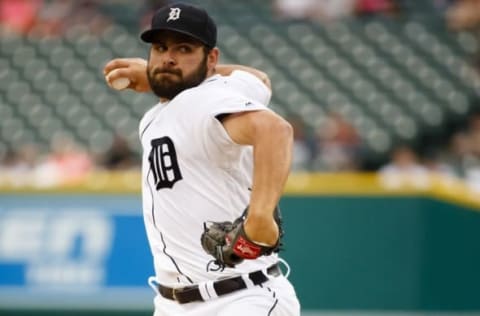
70.2 IP, 2.80 K/BB, 2.17 ERA, 3.52 FIP, 1.4 WAR
We have a new leader, and it’s Tigers right-hander Michael Fulmer, who after appearing lower on this list in the past, was able to catapult himself to the top with a stellar month of June — and a little help from Nomar Mazara.
More from Call to the Pen
- Philadelphia Phillies, ready for a stretch run, bomb St. Louis Cardinals
- Philadelphia Phillies: The 4 players on the franchise’s Mount Rushmore
- Boston Red Sox fans should be upset over Mookie Betts’ comment
- Analyzing the Boston Red Sox trade for Dave Henderson and Spike Owen
- 2023 MLB postseason likely to have a strange look without Yankees, Red Sox, Cardinals
In June, Fulmer pitched 29.2 innings, posting a 0.61 ERA and 3.61 FIP, striking out 24 and walking 13. Now, the peripheral numbers — FIP, strikeouts and walks — aren’t quite as sterling as the ERA, and suggest he likely didn’t pitch as well as the run prevention numbers suggest. But ERA is going to matter to a lot of voters, and his is currently at 2.17 on the season, which is best in all of baseball, not just among rookies, for pitchers with a minimum of 70 innings.
Among rookie starters, Fulmer is tops in strikeouts, ERA, FIP, xFIP and WAR, and in most of the categories it isn’t even close. And while I don’t place any value in pitcher record, some voters do, so his 8-2 record certainly won’t hurt.
As with the other four players on this list, there are some red flags. Fulmer is currently running an ERA far below his FIP (3.52) and xFIP (3.81). While some pitchers manage to do this, it’s fairly rare, and almost never to this extent. The largest ERA-FIP gap was -1.27 last year by Marco Estrada. Fulmer is currently at -1.35. Something has to give, and because FIP is generally much more stable and predictive, it’s likely that his ERA will begin trending up.
Next: Mariners Move Karns to Bullpen
Even so, it isn’t like Fulmer has FIP numbers. A 3.52 FIP would still likely put him among the top 30-40 starters in the game, and, if Mazara stays about where he is, would be enough to keep him in the #1 spot for me personally.